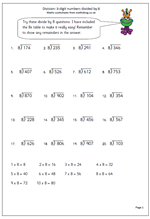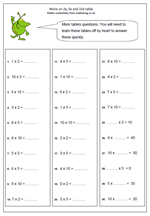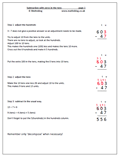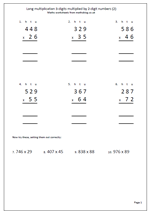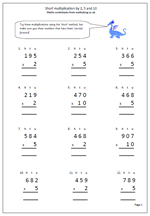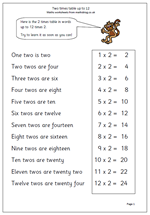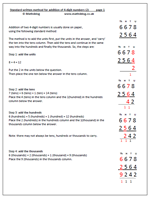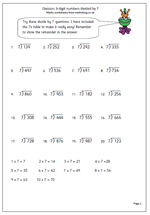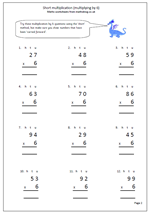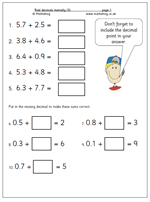 Here is another page which looks at adding decimals mentally and once again shows the different approach which is usually taken compared to the standard written method.
Here is another page which looks at adding decimals mentally and once again shows the different approach which is usually taken compared to the standard written method.
To illustrate what I mean let’s look at the first question: 5.7 + 2.5. If this was done by the written method the two numbers would be placed in a vertical form:
5.7
2.5
and added starting with the tenths before going on to the units.
When using mental methods it would be quite usual to start with the units, adding the 5 and 2 to make 7, holding this in our memory, then adding the 7 and 5 tenths, making 1.2 before finally adding the 1.2and 7 to make 8.2.
The second set of questions on the page are probably best done by adding on. For example:
0.8 + ?? = 3
I would do this by adding 0.2 to 0.8 to make 1 and then counting on 2 more to make 3. There are , of course, other ways but the important thing is that whatever method is used it needs to be quick and accurate.
More of this type of question can be found in our Four Rules category.
